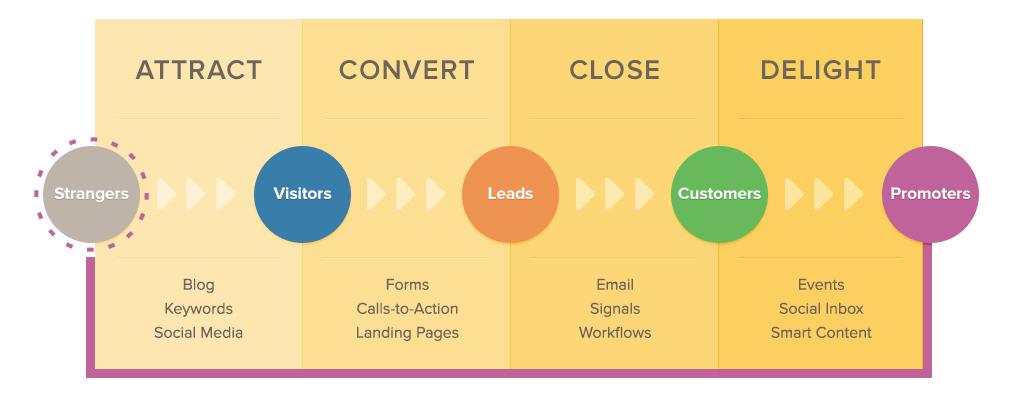This article looks at why inbound sales teams need conversational marketing. No matter how many people there are on your sales team, ultimately each salesperson can only handle one call per person, per sale. Even if you have a sales floor, your company has only employed the staff to match the number of calls being made and received. Leadbots, on the other hand, can handle multiple enquiries and redirect conversations to available sales personnel.
Most organisations find themselves in situations where sales personnel never seem to have enough time. Calls go unanswered, leads run cold, opportunity reduces, and then you spend more money acquiring new leads with new strategies.
Additional Costs
Please don’t get me wrong, adding conversational marketing would be an additional cost. But add it to your current lead generation activity and you increase the opportunity to qualify more leads. By qualifying more leads you reduce sales time and increase real opportunity.
Lead Qualification
Qualify more leads whilst your sales team makes their daily calls and their funnels heat up and income increases. It’s a result of an inbound marketing strategy that has a multi-pronged approach. Remember not everybody is ready to buy, not all will pick up a phone, they want you to reach out first. Link your lead bot to your sales team's calendars and you can also book far more consultations and demonstrations.
Understanding your Marketing Strategy
Understanding your marketing strategy is key to the success or failure of your business.
Companies that don’t have multiple touchpoint strategies significantly decrease the opportunity to retail their products or services. That’s why inbound marketing is so successful and widely adopted.

Look at how inbound marketing works, it involves the use of several different touchpoints to get your message across:
- Social Media
- Blogging
- Other Content Types
- Landing Pages & Gated Content
- Email Lead Nurturing
- Email Newsletters
- Events
Managing these many touchpoints in a comprehensive and cohesive manner makes a lot of sense for obvious reasons.
How CHATbots increase opportunity and profitability
However, in a recent post I wrote I pointed out that despite all of this effort, average conversion rates are low.
Somewhere between 2 and 5%.
So let’s look at some hypothetical number’s to see what could happen if you achieved a
100, 200, 300 or 400%
Increase in qualified leads in your sales funnel, with a product that retails at £2,000 and you make sales to 10% of your conversions
| Page Traffic | Conversion 2% | £ (10%) | Increase 100% | £ |
| 1500 | 30 | 6000 | 100 | 12000 |
| 2500 | 50 | 10000 | 100 | 20000 |
| 5000 | 100 | 20000 | 100 | 40000 |
| 10000 | 200 | 40000 | 100 | 80000 |
| Page Traffic | Conversion 2% | £ (10%) | Increase 200% | £ |
| 1500 | 30 | 6000 | 200 | 18000 |
| 2500 | 50 | 10000 | 200 | 30000 |
| 5000 | 100 | 20000 | 200 | 60000 |
| 10000 | 200 | 40000 | 200 | 120,000 |
| Page Traffic | Conversion 2% | £ (10%) | Increase 300% | £ |
| 1500 | 30 | 6000 | 300 | 24000 |
| 2500 | 50 | 10000 | 300 | 40000 |
| 5000 | 100 | 20000 | 300 | 80000 |
| 10000 | 200 | 40000 | 300 | 160000 |
| Page Traffic | Conversion 2% | £ (10%) | Increase 400% | £ |
| 1500 | 30 | 6000 | 400 | 30000 |
| 2500 | 50 | 10000 | 400 | 50000 |
| 5000 | 100 | 20000 | 400 | 100000 |
| 10000 | 200 | 40000 | 400 | 200000 |
How to Close Leads with Chatbots
Every day more and more potential customers are engaging with companies that utilise chatbots. This means they are becoming the norm and expected, which already removes one barrier to resistance in the lead nurturing process.
Not only are they widely adopted in B2C relationships like hotels for example, but they can also speed up closure rates in B2B marketing conversations.
The problem in the short term is that people are trying to be far too clever with chatbots than they actually need be. The aim is to get your prospect or website/landing page visitor to buy or converse with a real person as soon as possible or otherwise convert, not engage in a long drawn out conversation.
Have you forgotten the art of sales over inbound marketing already?
I recently spoke with a prospect considering a chatbot or multiple chatbots within their marketing toolkit. I quickly interjected that the chatbot is actually a combination of three very important requirements:
- Inbound Lead Nurturing
- Prospecting
- Sales pre-qualification
Looking at a chatbot as a simple chatbot provides no real qualification as to what use the tool may be, it actually talks itself out of adopting. However, if you look at the chatbot as a tool for marketing and sales lead generation and qualification then you are onto a winner.
The chatbot is a facilitator in a digital platform that has a sole ambition to be relevant, direct and easy to engage with, to get your prospects into qualified leads. It has the capacity to close a sale if you, of course, know how to “talk” your prospect into it.
In my previous article, the art of conversational marketing, I cover this in more depth, so please, go ahead and check that out.
In this case, when I discuss with my clients how to close leads with chatbots, we always discuss the chatbots we use at Bias Digital, and I simply tell them this.
Our chatbot brings us more qualified leads than our inbound marketing does and it closes the cycle down to minutes. Within 3 minutes of a prospect engaging with the bot, we get a clear understanding of what our lead wants, where they want to be contacted and if they like, they can book their own appointment in our meeting calendar.
We have obtained their consent to be contacted (solving GDPR), allowed them to tell us what they need help with within reason and also qualified that they have a real issue that needs solving allowing our sales team to follow up immediately and effectively.
Of course, as we refine our own strategy, we can then pass on the benefits of that experience to our clients and we already have pathways to doing this and will be testing these over the coming months ( I will tie the data back to this post once we have collated it).
But this is our intention.
Like most campaigns of a standard inbound nature, the ambition is to tie the content and landing page to a suitable section of the funnel and then get your prospects into a lead nurturing campaign via email.
Well, that is old hat and times are changing!
Yes lead nurturing still takes place, but wouldn’t you want an asset that enables a rapid progression through the funnel at a pace that allows the prospect to believe that they are in control, when in fact it is your company that is?
Your chatbot allows your website visitor to believe they are in control, they relax and they give you the information you need to close that sale or at least to allow your salespeople to start a conversation to a warm receptive lead, openly seeking your product or service.
Again, I implore you to understand that this is a tool that should be used in your marketing stack, it should not be focused on as a one for all solution to solving all problems. It will, however, play an intrinsic role in shortening the lead nurturing process to immediate serving exactly what the client wants.
Remember the age-old saying goes “strike whilst the iron is hot”!
If your company isn’t focused on immediacy, conversational marketing, chatbot qualified leads in support of your inbound marketing campaigns then you are already lagging well behind and need to catch up.
Currently, the Bias Bot Bot is at about 80% conversion, some people, unfortunately, see it like a robot and forget that real people have to read the engagement between the said website visitor and the bot. Some of the language used is really quite distasteful, but that again is always going to happen as we can answer questions, we cannot prepare for human behaviour, we simply hope for maturity and good manners.
So how do you utilise the chatbots? The answer is simple, segmentation and relevancy.
- Always try and build separate chatbot playbooks for the content and services that you discuss on your company blog. For example, if you are an agency that sells both web design and marketing services and distribute content on your blog for each, then have two chatbot playbooks. One for each service. If you offer more content, add a playbook, such as consulting or social media.
- Don’t hide your chatbot behind a human face. It’s a robot with pre-programmed responses to questions that you want to answer to manoeuvre your prospect through your funnel. Embrace that situation and you will soon find that your prospects are completely fine with it too!
- Get to the point. Nobody, but nobody needs a chatbot with 75 questions. Feel free to use an inbound approach to your conversational marketing strategy and move prospects between chatbot conversations if needed. However, do not be fooled into thinking that you need to be overly clever to get a prospect to open up immediately. It will happen more often than not.
- If you are smart, you can get both the email address and a telephone number within the one conversation, as long as you don’t try to get that at the same time and the reason is relevant. Start with something like, “can we grab your email in case we are disconnected” and then if you get a positive outcome from your playbook, ask the new prospect if you can get their number in order to call them. Sounds crazy right? but again, when someone is ready to buy, you need to strike whilst the iron is hot.
Do I need to say more?
Heads of Marketing, Sales & Business Development
All of your heads of sales, marketing, and business development know that increments in percentages are what get you success. As I chose low numbers on conversion percentages, you can compare this to your own internal data to see what impact this would make on your bottom line.
Let’s face it, viral marketing campaigns are rare (depending on your KPI’s) and brand loyalty isn’t what it once was as the digital revolution intensifies. Adding more technology to your marketing and sales stack makes more sense than not. And that is why inbound sales teams need conversational marketing.
So what are you going to do?
How do I get started with conversational marketing?
Well, this is the easy bit. Just get started. Talk to a conversational marketing agency like ours and implement a simple lead bot to get you going. We even offer a 30-day conversion challenge, a proof-of-use package that gets you going very quickly. We then back that up with our jumpstart conversion campaign which only commits you for a further 90 days.
Unlike Hubspot or other marketing automation platforms, we don’t tie you in for lengthy 12-month contracts. We believe that showing proof of use, then building a single campaign works better for both sides. We do have longer campaigns built into our services, but trust and results are far more important to us.
So there it is. Our reasons why inbound sales teams need conversational marketing and why you must have traffic if you want to succeed. For more information and consultation, book us here.
%20small.jpg)


